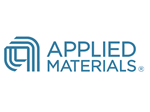Applied Materials Expands Patterning Solutions Portfolio for Angstrom Era Chipmaking
- Applied is working with all leading-edge logic chipmakers on a growing number of applications for its Sculpta® pattern-shaping technology
- Introducing innovative new etch systems, CVD patterning films and metrology solutions to complement and improve chips made using EUV and High-NA EUV lithography
Sculpta Momentum: Growing Adoption and New Applications
At last year’s SPIE lithography conference, Applied introduced the Centura® Sculpta® patterning system, which allows chipmakers to reduce EUV double patterning steps by elongating patterned features, bringing the tips of the features closer together than achievable with a single EUV or High-NA EUV exposure. Applied is now working with all leading-edge logic chipmakers on a growing number of Sculpta applications. For example, in addition to reducing tip-to-tip spacing, chipmakers are using Sculpta to remove bridge defects, thereby enabling reduced patterning cost and improved chip yield.
“Leading chipmakers are seeing excellent results as they deploy Sculpta systems in production and explore additional applications beyond EUV double patterning step reduction,” said Dr.
“Pattern shaping is an innovative solution that is helping Intel accelerate its process technology roadmap,” said
“Pattern shaping is a breakthrough technology that addresses key challenges in the EUV era,” said
New Etch Technology Heals EUV Line Edge Roughness
EUV systems produce fewer of the photons needed to crisply define line and space patterns in photoresists. As a result, lines with rough edges are etched into the wafer, potentially creating open and short circuits in the chip. These yield-killing defects are becoming more prevalent as chipmakers implement angstrom era designs with narrower line and space patterns.
Applied today introduced the Sym3® Y Magnum™ etch system, which combines deposition and etch technology in the same chamber. The unique system deposits material along rough edges, making EUV line patterns smoother before they are etched into the wafer, enabling an increase in yields and a decrease in line resistance to improve chip performance and power consumption. In foundry-logic, Sym3 Y Magnum has already been adopted for critical etch applications at leading chipmakers and is now being deployed for EUV patterning in angstrom era nodes. In memory, Sym3 Y Magnum is the most widely adopted etch technology for EUV patterning in DRAM.
New CVD Patterning Film for Angstrom Era Patterning
Applied today introduced the Producer® XP Pioneer® CVD (chemical vapor deposition) patterning film. The Pioneer film is deposited on the wafer prior to photoresist pattern processing and is uniquely designed to transfer desired patterns to the wafer with exceptional fidelity. Pioneer is based on a unique high-density carbon formula that is more resilient to etch chemistries used in the most advanced process nodes, permitting thinner film stacks with superior sidewall feature uniformity. Pioneer has already been adopted by leading memory manufacturers for DRAM patterning.
Pioneer has been co-optimized with Applied’s Sculpta pattern-shaping technology, enabling patterning engineers to maximize pattern elongation while maintaining tight control of the original EUV pattern. Pioneer is also being co-optimized with the new Sym3 Y Magnum etch system to provide higher selectivity and better control over conventional carbon films for critical etch applications in logic and memory processing.
Avoiding Placement Errors: Introducing Aselta
Applied’s industry-leading eBeam metrology systems are used by the world’s leading logic and memory companies to develop and control their most critical EUV patterning applications. A major challenge is tightly defining and placing the billions of features on each layer so they properly align with their opposite features on the next layer of the chip. Small placement errors reduce chip performance and power consumption, and large errors create yield-killing defects.
Applied has acquired Aselta Nanographics, a technology leader in design-based metrology using contours. Contours enable patterning engineers to gather orders of magnitudes more data about the shapes their recipes are creating in patterning films and on the wafer. This data is fed back into the lithography and process flow to create more exact on-chip features and placement.
“Aselta contour technology is now being integrated with Applied’s VeritySEM® CD-SEM system and PROVision® eBeam metrology system to give chipmakers a unique end-to-end capability that addresses the full spectrum of angstrom era metrology challenges,” said
A Growing Patterning Portfolio and Business
Since 2012,
Forward-Looking Statements
This press release contains forward-looking statements, including those regarding anticipated benefits of our new products and technologies; expected growth and trends in our businesses and markets, industry outlooks and demand drivers, technology transitions, and other statements that are not historical facts. These statements and their underlying assumptions are subject to risks and uncertainties and are not guarantees of future performance. Factors that could cause actual results to differ materially from those expressed or implied by such statements include, without limitation: failure to realize anticipated benefits of our new products and technologies; the demand for semiconductors; customers’ technology and capacity requirements; the introduction of new and innovative technologies, and the timing of technology transitions; market acceptance of existing and newly developed products; the ability to obtain and protect intellectual property rights in technologies; our ability to ensure compliance with applicable law, rules and regulations; and other risks and uncertainties described in our
About
Contact:
Photos accompanying this announcement are available at:
https://www.globenewswire.com/NewsRoom/AttachmentNg/7f18da3e-ea63-4c18-b31c-49abb997cf99
https://www.globenewswire.com/NewsRoom/AttachmentNg/c1db1fa0-62fd-41bb-8bb2-6b1cc415ba29

Applied Materials Expands Patterning Solutions Portfolio
To help overcome patterning challenges for leading-edge chips, Applied Materials offers a portfolio of technologies designed to complement the latest advances in lithography. The company’s newest innovations include the Producer® XP Pioneer® CVD patterning film, the Sym3® Y Magnum™ etch system, the Centura® Sculpta® pattern-shaping system and Aselta contour technology for design-based metrology.
Applied Materials' Process Innovations for the Patterning Engineer’s Toolkit
Over the next few years, chipmakers will be looking to create “angstrom era” chips that will use EUV and High-NA EUV lithography to pattern their smallest features. An entire ecosystem of capabilities will be required to enable this advanced patterning – including software and design tools, innovations in deposition and etch, advanced metrology and inspection systems, and entirely new approaches such as pattern shaping.
Source: Applied Materials, Inc.



